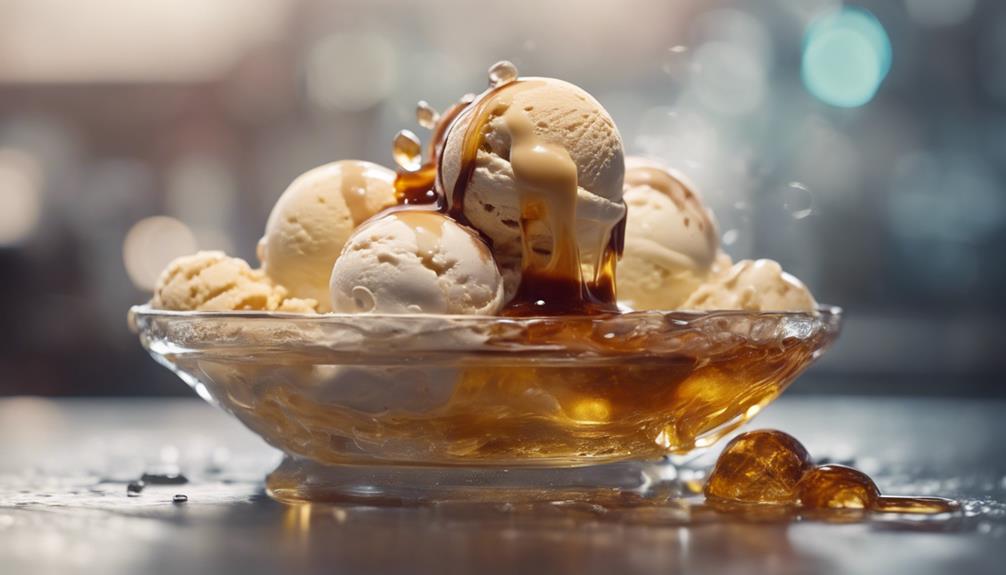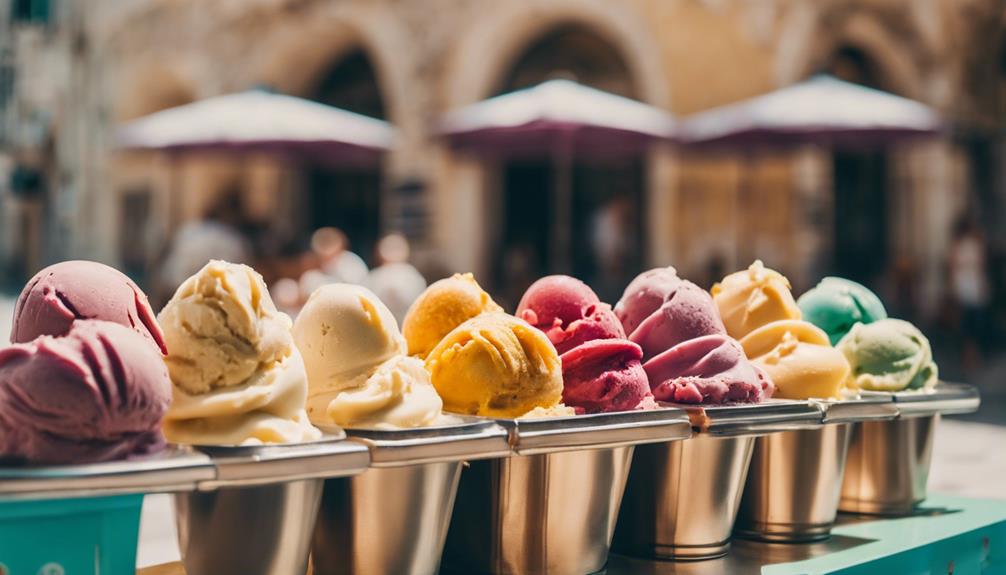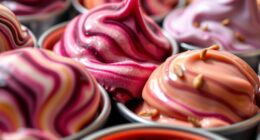Alcohol impacts ice cream by altering its freezing point, which in turn affects its texture and scooping ability. The recommended amount is less than 20% of the total weight for optimal consistency. Adding small amounts of alcohol can improve the flavor without sacrificing texture, but excessive amounts can result in a softer final product. Learn about how alcohol can elevate your dessert experience by harmonizing taste and texture for a truly enjoyable treat!
Key Takeaways
- Alcohol alters freezing point, preventing large ice crystals for a smoother texture.
- Moderate alcohol content, below 20%, is crucial for balanced flavor and texture.
- Different alcohols freeze at varying temperatures, impacting final consistency.
- Small amounts of alcohol enhance flavor without compromising texture.
- Excessive alcohol can lead to a softer consistency, so balance is key.
Alcohol's Freezing Point Impact

When adding alcohol to ice cream, its freezing point impact is a significant aspect to keep in mind for achieving the desired texture and scoopability.
Alcohol, such as spirits, beer, or wine, freezes at a lower temperature than water, which alters the freezing point of the ice cream.
Different types of alcohol freeze at varying temperatures, directly influencing the final dessert's texture and scoopability.
While adding alcohol can enhance flavor and texture, it's essential to moderate the alcohol content to avoid significant changes in freezing point.
Typically, alcohol content should be maintained below 20% of the total ice cream weight to uphold best texture and scoopability.
The quantity of alcohol added directly correlates with the softness of the dessert, with lower percentages ensuring better scoopability than higher concentrations.
Alcohol Quantity and Texture

Understanding the relationship between alcohol quantity and texture is fundamental to achieving the desired consistency in your homemade ice cream. The amounts of alcohol you add can greatly affect the final texture of your frozen treat.
Adding a small amount of alcohol can improve the flavor of the ice cream without impacting its texture. However, it's essential to keep the alcohol percentage below 20% to maintain the best texture. Higher alcohol percentages will result in a softer ice cream that may not freeze properly or hold its shape when scooped.
When experimenting with alcohol in your ice cream recipes, consider how the alcohol quantity impacts the overall texture and consistency of the final product. Be mindful of the balance between flavor enhancement and texture alteration.
Recipe Subscription and Inspiration
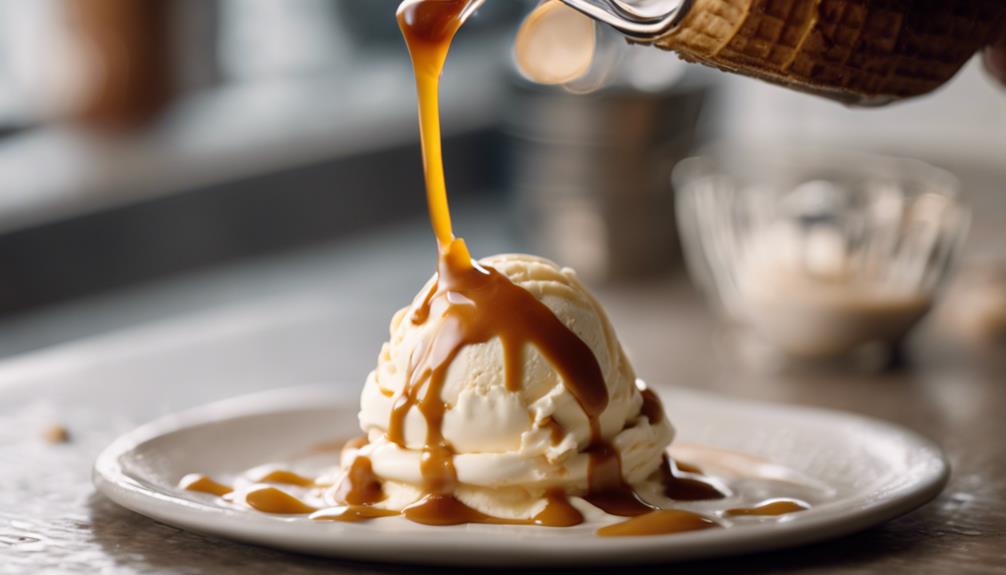
Consider subscribing to Kitchen Alchemy for a diverse range of recipes, culinary tips, and creative kitchen inspiration.
- Discover New Recipes: Plunge into a treasure trove of unique and flavorful recipes to impress your family and friends.
- Improve Your Culinary Skills: Learn valuable tips and techniques that will elevate your cooking to the next level.
- Stay Inspired: Get your creative juices flowing with innovative ideas and exciting flavor combinations.
- Join a Culinary Community: Connect with like-minded individuals passionate about cooking and experimenting in the kitchen.
With a recipe subscription from Kitchen Alchemy, you can open up a world of culinary possibilities right at your fingertips.
Whether you're a seasoned chef or a beginner in the kitchen, this platform offers something for everyone.
Alcohol Ice Cream by PROOF
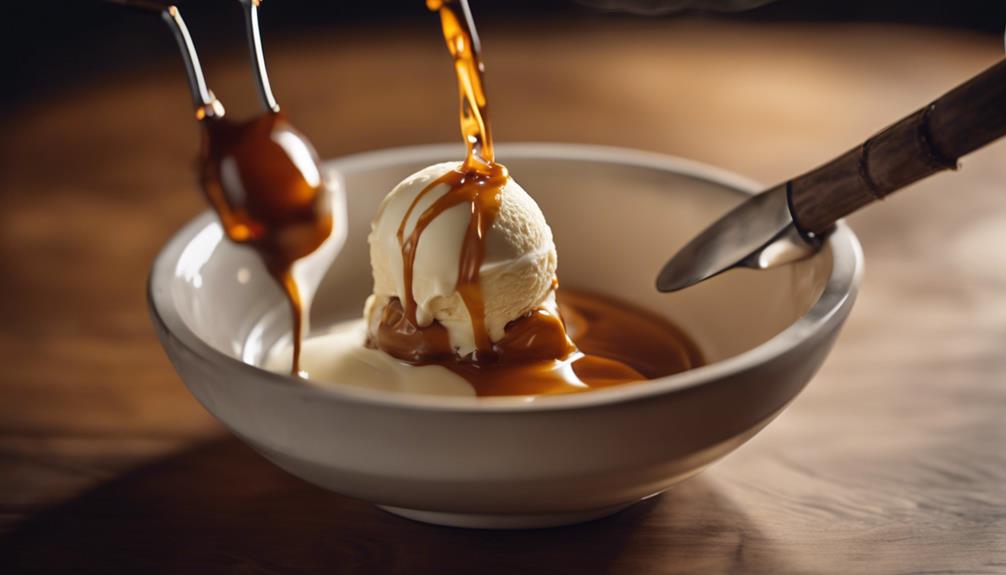
Indulge in PROOF's alcohol-infused ice cream, boasting flavors like Cheesecake Moonshine and Sweet Caramel Old Fashioned. The innovative combination of alcohol and ice cream brings a unique twist to your dessert experience. Adding alcohol to ice cream provides a new way to enjoy your favorite treat, blending the creaminess of ice cream with the flavors of popular alcoholic beverages.
Check out the table below for a quick look at some key features of PROOF's alcohol ice cream:
| Feature | Description |
|---|---|
| Flavors Available | Cheesecake Moonshine, Sweet Caramel Old Fashioned |
| Alcohol Content | 5% ABV, advertised as 10 Proof |
| Container Size | Just under 13 ounces |
With a reasonable price point of around $10 per container, this alcohol-infused ice cream offers a delightful balance of sweetness and alcohol flavor. The positive reception from consumers and media coverage indicates a growing interest in this innovative twist on traditional ice cream flavors. Get ready to elevate your dessert game with PROOF's alcohol ice cream!
Product Details and Taste
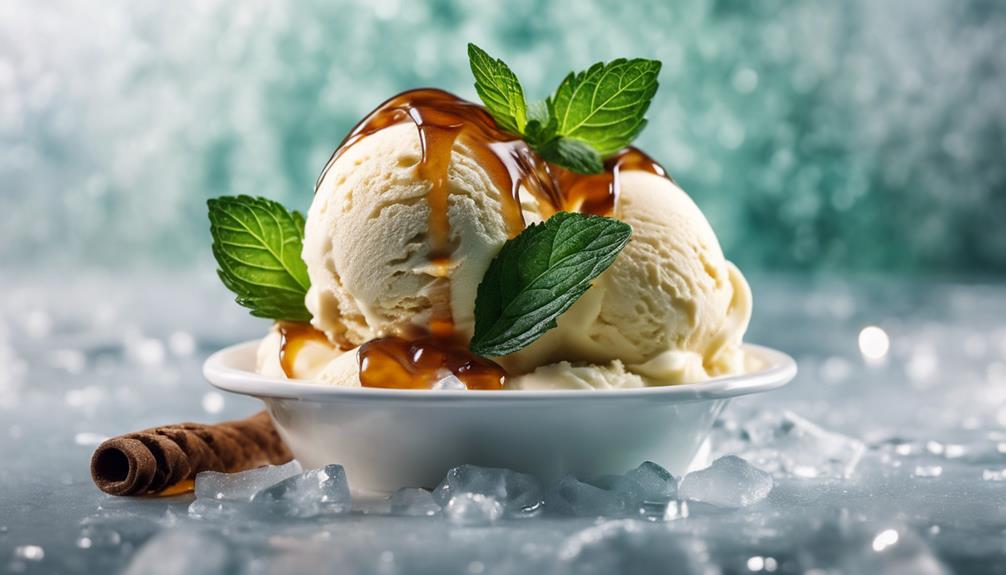
When sampling PROOF's alcohol-infused ice cream, you may notice a distinct blend of creamy sweetness and alcohol flavor. Here are some key product details and taste aspects to bear in mind:
- The alcohol content in PROOF's ice cream is 5% by volume.
- Each container of this boozy treat weighs just under 13 ounces.
- PROOF's Sweet Vanilla Cheesecake flavor is marketed as 10 Proof, giving a nod to its alcohol content.
- Consumers should be prepared for a noticeable alcohol taste in this unique dessert.
This alcohol-infused ice cream comes at a price point of around $10 per container, making it an indulgent yet affordable treat for those looking to add a twist to their dessert experience.
With a balance of sweetness and alcohol, PROOF's ice cream offers a taste sensation that's sure to intrigue those seeking a new way to enjoy their favorite frozen treat.
Consumer Opinion and Media Coverage

Consumers enjoy the distinct alcohol-infused flavors of ice cream, such as vanilla cheesecake. Their positive feedback often leads to a desire to explore different varieties and a high satisfaction level.
Media platforms like Sasquatch 92.1 FM and Duluth/Superior News contribute to the growing popularity of alcohol ice cream by featuring it in the food and drink category.
Taste and Enjoyment
The sweet vanilla cheesecake flavor of PROOF alcohol-infused ice cream has garnered positive consumer feedback and media attention. Consumers reported enjoying the unique combination of alcohol and dessert, leading to a delightful taste experience. Some even expressed not regretting finishing the container in one sitting, showcasing the deliciousness of the product. Additionally, consumers mentioned their willingness to explore other flavors offered by PROOF, hinting at a promising future for the brand.
Consumers found the alcohol-infused ice cream to be a revitalizing summer indulgence.
Media coverage on Sasquatch 92.1 FM and Duluth/Superior News highlighted the product in the food and drink category, sparking interest among listeners and readers.
While consumers viewed PROOF alcohol ice cream as a potential go-to summer treat, they saw it more as an occasional delight rather than a staple to stock in the freezer.
Public Reception
Amidst positive consumer feedback and media coverage on Sasquatch 92.1 FM and Duluth/Superior News, the sweet vanilla cheesecake flavor and noticeable alcohol content in PROOF alcohol-infused ice cream have captured attention.
Public reception has been generally favorable, with consumers expressing enthusiasm for the unique combination of flavors. Many have shared that they enjoyed the rich taste of vanilla cheesecake intertwined with the distinct presence of alcohol in each bite.
Media outlets have also taken notice, featuring the product in the food and drink category, further amplifying its visibility. Priced at around $10 per container and containing 5% alcohol by volume, the ice cream has the potential to become a sought-after summer indulgence for some individuals.
While not everyone may rush to stock their freezers with alcohol-infused ice cream regularly, the general consensus indicates a willingness to revisit the product or explore other flavors in the future.
Media Impressions
Media outlets have highlighted the positive consumer reception and unique flavor profile of PROOF alcohol-infused ice cream.
- Consumers reported enjoying the vanilla cheesecake flavor, considering it a potential go-to summer treat.
- The product contains 5% alcohol by volume in just under 13-ounce containers.
- Media coverage includes features on Sasquatch 92.1 FM and Duluth/Superior News, focusing on the food and drink category.
- Consumers expressed satisfaction with the noticeable alcohol taste and sweet but not overly sweet flavor profile of the ice cream.
With media impressions emphasizing the favorable consumer feedback and distinct taste experience of PROOF alcohol-infused ice cream, it's clear that this innovative dessert has captured attention in both traditional and online platforms.
The product's balance of alcohol content and flavor, coupled with its premium quality, has resonated well with consumers, making it a standout choice for those seeking a unique and indulgent treat.
Effects of Alcohol in Ice Cream
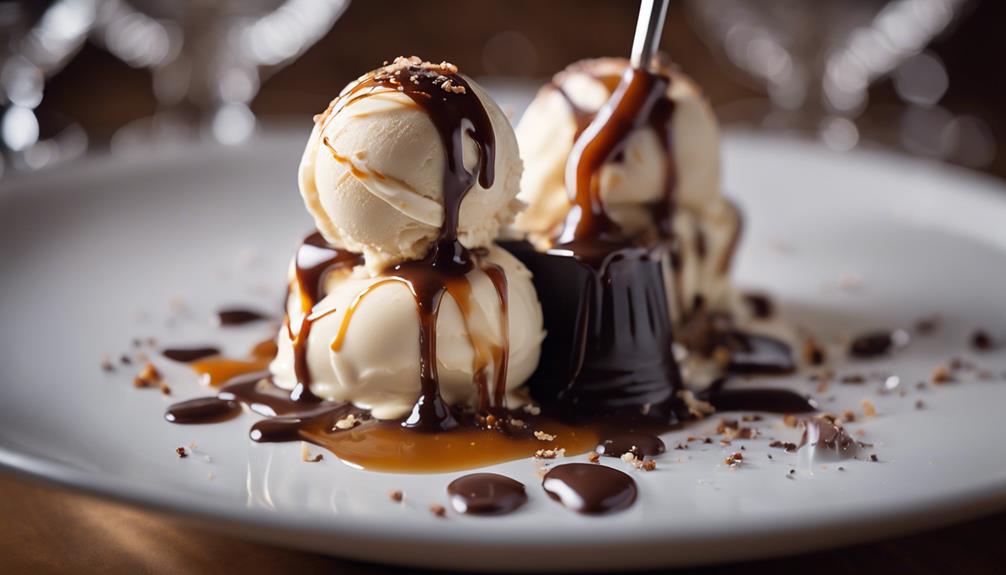
When alcohol is added to ice cream, it alters the freezing point, resulting in a smoother texture that enhances both flavor and consistency.
However, excessive alcohol content can hinder proper freezing and lead to a less-than-ideal soupy texture.
To maintain best scoopability, it's vital to keep the alcohol content below 20% and consider the freezing points of different types of alcohol for the desired final texture.
Freezing Point Alteration
Altering the freezing point of ice cream through the addition of alcohol results in a smoother texture and enhanced flavor profile. When alcohol is introduced into ice cream, it impacts the freezing process by lowering the freezing point. This has a direct effect on the formation of ice crystals in the dessert, preventing the development of large, undesirable crystals.
Here are some key points to keep in mind regarding freezing point alteration in alcohol-infused ice cream:
- Alcohol lowers the freezing point, inhibiting the formation of large ice crystals.
- Different types of alcohol freeze at varying temperatures, influencing the texture of the final product.
- The addition of alcohol can elevate the flavor profile of the ice cream, introducing new and exciting taste dimensions.
- It's essential to moderate the alcohol content to strike a balance between flavor enhancement and proper freezing consistency.
Texture Impact Analysis
Alcohol's presence in ice cream greatly influences its texture, especially when it comes to scoopability and softness. The texture impact of alcohol in ice cream is significant due to its ability to alter the freezing point of the dessert.
Different types of alcohol freeze at varying temperatures, directly affecting the final consistency of the treat. When added in small amounts, alcohol can enhance the flavor profile without compromising the overall texture. However, the alcohol content plays a vital role in determining the softness of the ice cream.
Ice creams with lower alcohol percentages tend to maintain better scoopability, while those with excessive alcohol content can lead to a softer consistency and hinder the freezing process. Understanding the texture impact of alcohol in ice cream is essential for achieving the desired balance between flavor enhancement and maintaining the best scoopable texture of this delightful dessert.
Consequences and Tips to Avoid
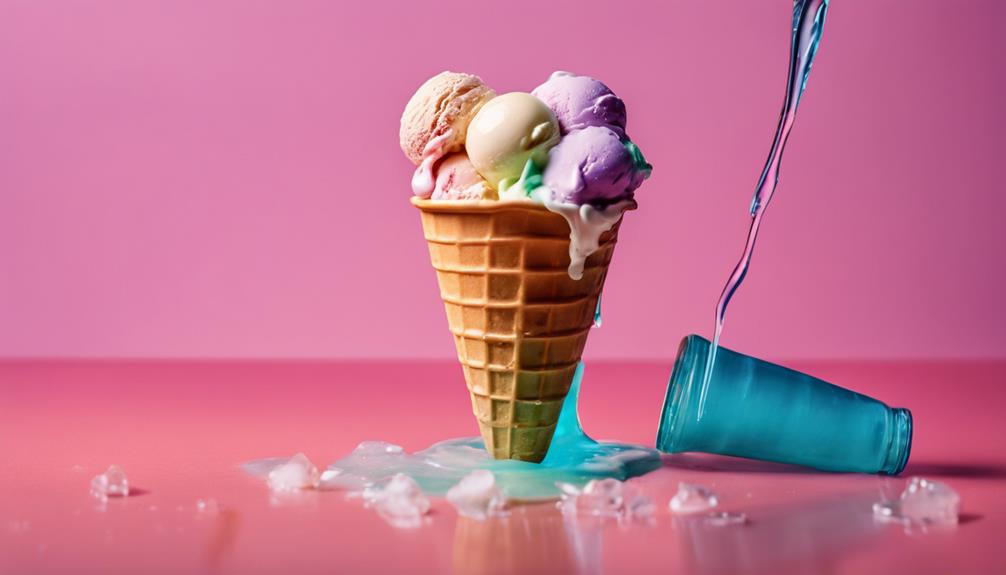
Excessive alcohol content in ice cream can lead to an overwhelming boozy aftertaste, affecting the overall enjoyment of the dessert. To avoid this and maintain a desirable texture, consider the following tips:
- Start Small: Begin by incorporating small amounts of alcohol into your ice cream base, then adjust based on taste and texture to avoid overpowering flavors.
- Choose Complementary Spirits: Opt for spirits that complement the flavors in your ice cream to prevent an excessive alcohol presence while enhancing taste.
- Explore Non-Alcoholic Infusions: Infusing cream with non-alcoholic options like coffee or spices can add depth of flavor without the need for high alcohol content.
- Balance Wisely: Balancing the alcohol content carefully is key to preserving the desired taste and texture of your homemade ice cream.
Frequently Asked Questions
Is Alcohol in Ice Cream Still Alcoholic?
Yes, alcohol in ice cream is still alcoholic, but the freezing process reduces its strength. The small amount in ice cream won't notably impact blood alcohol levels. Its main role is to enhance flavor and texture, not intoxicate.
Why Do They Put Alcohol in Desserts?
When they add alcohol to desserts, they aim to enhance flavors and textures. Spirits like rum and bourbon bring unique tastes. Alcohol lowers the freezing point, making ice cream smoother. So, they put alcohol in desserts for a tasteful twist!
What Does Alcohol Ice Cream Taste Like?
Alcohol ice cream tastes like a delightful blend of sweet and boozy flavors. You'll enjoy a creamy treat with a hint of alcohol, adding a unique twist to your favorite dessert. It's a tasty indulgence worth trying!
What Is Drunken Ice Cream?
Imagine trying drunken ice cream! It's infused with alcohol, altering texture and flavor. Various alcohol types freeze at different temps, impacting scoopability. Keep alcohol content under 20% for ideal consistency. Experiment for tasty combos!
How Does Alcohol Affect the Likelihood of Getting a Brain Freeze from Ice Cream?
When consuming alcohol, the likelihood of experiencing the science behind brain freeze from eating ice cream may increase. This is because alcohol can numb the nerves in the mouth and throat, making individuals less sensitive to extreme cold temperatures and more prone to sudden headaches known as brain freezes.
Conclusion
So there you have it – alcohol can truly spice up your ice cream game! From changing the freezing point to altering texture, booze brings a whole new level of excitement to your favorite dessert.
Remember, the proof is in the pudding… or in this case, the ice cream! Be sure to experiment with different recipes and flavors to find the perfect boozy treat for your taste buds.
Cheers to enjoying a scoop of something extra special!
